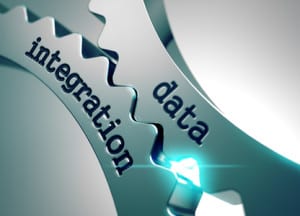
Businesses investing in an enterprise resource planning system should look to training, address issues such as data integrity, and allow for scalability.
During the inquiry into the Titantic’s sinking, investigators uncovered that the ship’s lookouts weren’t equipped with binoculars. This contributed to the short margin between the iceberg sighting and impact with the ship. Although an extreme example, it does illustrate the need for businesses and most importantly their staff to be supplied with the proper tools.
Enterprise Resource Planning (ERP) systems are powerful tools that businesses of all sizes can use. The benefit of accessing real-time data across various modules is key in improving a business’ bottom line and optimizing performance. However, implementation alone won’t guarantee these results. So here are a few tips to help you get the most from an ERP system.
Don’t be afraid to bring in help
No matter if your business is looking to implement an enterprise resource planning system or wanting to upgrade the current one, consider bringing in outside help. Rarely is anyone in your organization already an expert on ERP software and providers.
Make the on-going investment into both the tool and its users
Not only is it vital for the technology to be updated and maintained, but the continued education of users needs to be prioritized as well. Encouraging and empowering employees through training programs will not only teach them to maximize their use of the ERP system but promote quicker adoption of it. Without training, potential benefits will give way to employee frustration and miscommunication of data.
Support and educate your staff on the changes that ERP brings in
Integrated, real-time data will bring about quicker analysis and insight, all via a self-service manner. For instance, sales teams no longer need to rely and wait on reports synthesized by various departments. Now that systems have been integrated, employees can instead proactively manage and monitor their clients’ performance themselves. This increased accessibility of data may trigger organizational and job function change, which need to be properly addressed.
Invest in data integrity and security
With your business relying on insights and analysis derived from a centralized database, ensuring data integrity is key to achieving KPIs and business goals. Simply put: Bad decisions will be made when given bad data. There is also the increased the risk of data theft during a security breach due to the data centralization. It is incredibly vital to verify that data is being captured accurately and securely throughout the system. Today’s consumers are deeply concerned about data security, and cost for a breach goes beyond the immediate impact.
Don’t lose sight of the ultimate reason why an ERP system was needed
There are a variety of ERP systems available on the market, many of which have unique features and tools such as attractive visual reports or included service plans. It can be easy to get sidetracked by the technology and the bonus features. First, evaluate what your current needs are and compare them with the system’s features. Also keep your long-term goals and needs in mind. Having a system that allows for future scalability is also important.
Ultimately, an ERP system can be a valuable tool in optimizing your business workflow and increasing profitability. But such systems require continued investment and upkeep beyond the initial software cost. Staff and business practices will need to adapt and integrate with changes the system brings about. By being prepared, however, your investment will be rewarded with streamlined workflow; the use of real-time data and analytics to drive data-driven actions; and advanced warning of those incoming icebergs.
Want more? Check out our most-read content:
White Paper: How to ‘Future-Proof’ a Streaming Analytics Platform
Research from Gartner: Real-Time Analytics with the Internet of Things
E-Book: How to Move to a Fast Data Architecture
The Value of Bringing Analytics to the Edge
Video: Building Pipelines for Data Analytics With Vitria
IIC’s Soley: Industrial Internet Needs Semantic Standards
Video: Loop AI Labs on How Cognitive Computing Understands Language
Liked this article? Share it with your colleagues!





























